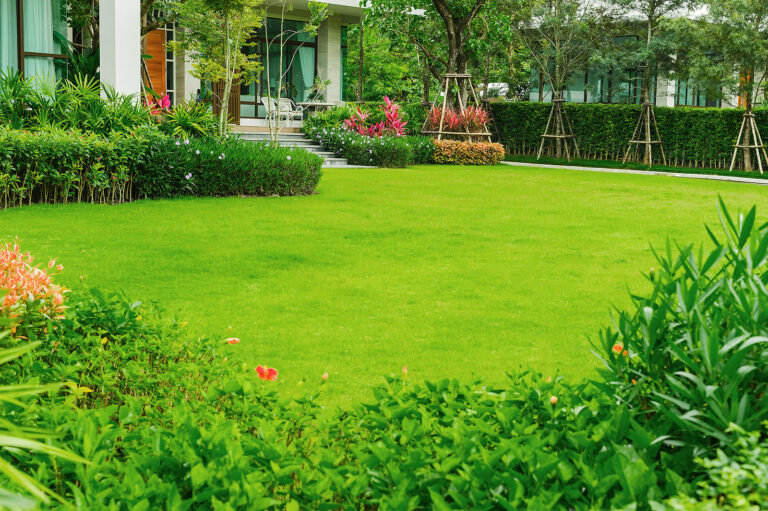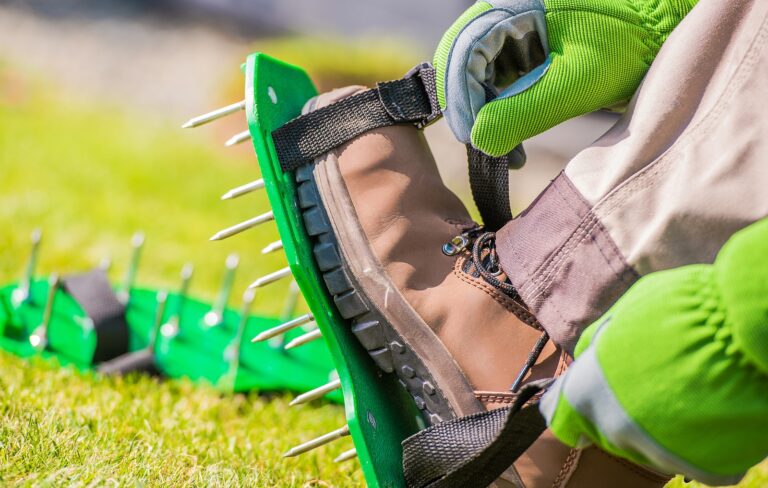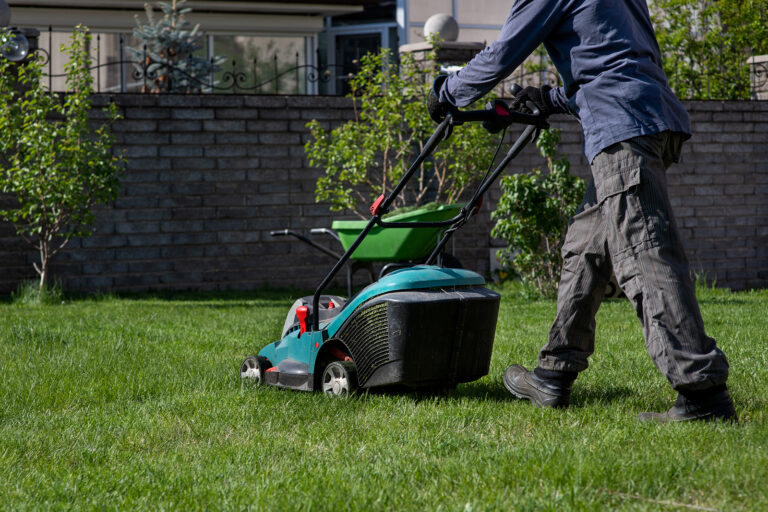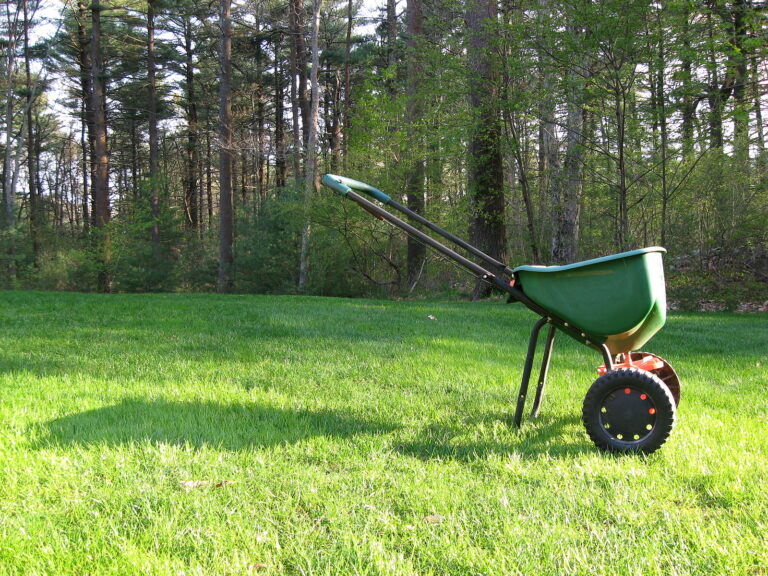How to Water a Lawn
Water your lawn to encourage deep root growth. A deep-rooted lawn is a healthy lawn. A healthy lawn can stave off most weeds, pests, and diseases. A healthy lawn will be drought tolerant.
As a rule, most lawns need 1 inch (2.5cm) of water per week. In hot, dry weather a lawn may need 1½ inches (3.7cm) of water per week.
Sprinkling a lawn lightly is harmful because it encourages shallow roots. Shallow root systems require frequent watering to keep the grass growing. Light watering also leaves shallow-rooted. A lawn that is shallow-rooted is an ideal target for weeds and diseases.
Water your lawn regularly and deeply. Encourage deep root growth by consistent, deep watering.
How much water
- Water a lawn to a depth of 6 to 12 inches (15-30cm). Deepwater penetration encourages grassroots to grow down rather than sideways. Deep watering will improve the root structure and drought tolerance of grass.
- One inch of water will penetrate sandy soil to about 1 inch (2.5cm) deep. One inch of water will penetrate loam soil to about 7 inches (18cm) deep. One inch of water will penetrate clay soil to about 4 inches (10cm) deep.
- To know how many inches of water your lawn is getting from rain or irrigation, place shallow cans around the lawn and time how long it takes them to fill to one inch deep. This in turn will tell you how long to water your lawn.
- Clay soil can take as long as 5 hours for the water to seep 1 inch deep. Sandy soil can absorb 1 inch of water in about 10 minutes
- Clay soil retains water and may require watering only once a week
- Sandy soils drain quickly. A lawn growing in sandy soil may need watering two or three times a week
- If you water for only a few minutes at a time, roots will stay near the surface; the shallower the root system, the more often you will have to water.
- Avoid runoff and puddling as much as possible. This may require cycling irrigation until the desired amount is applied. Because clay soil is slow to absorb water, sprinklers may have to cycle on and off three or more times to allow the water to absorb deeply.
- Cool-season grasses usually become semi-dormant in the hottest part of the summer; they recover their vigor in cooler fall weather. Regular deep watering is necessary to keep the lawn green through the summer.
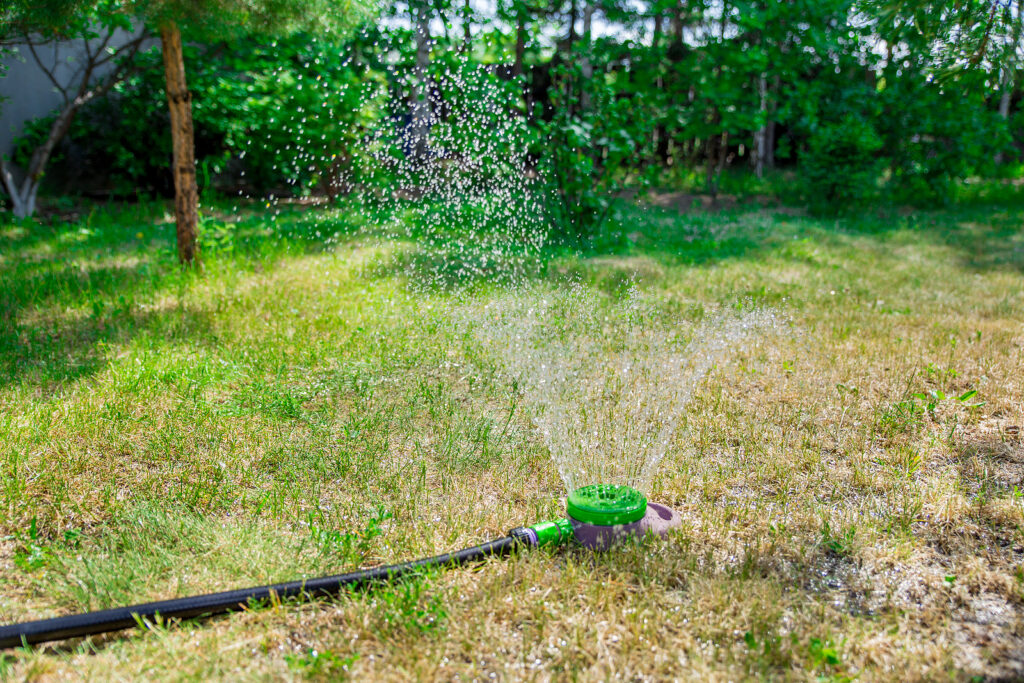
When to water
- The best time to water a lawn is early in the morning, 2 a.m. to 8 a.m. That is when evaporation is minimal and water-use efficiency is optimal. Place your irrigation system on a timer to water early in the morning.
- Early evening watering is not recommended because during cool nights grass blades and thatch that are wet at nightfall and stay wet through the night are susceptible to disease.
- Avoid watering in the middle of the day or in windy weather when irrigation water can evaporate quickly. Cool temperatures and lack of wind will minimize evaporation.
- Water when grass blades roll up lengthwise, lose their bright green color and take on a dull, grayish cast. Grass blades roll up lengthwise to conserve moisture lost through transpiration.
- Water when a lawn loses its resiliency. A lawn needs water when footprints remain visible when the lawn fails to spring back from light food traffic.
- Always water a lawn when the soil begins to dry out but and before the grass wilts.
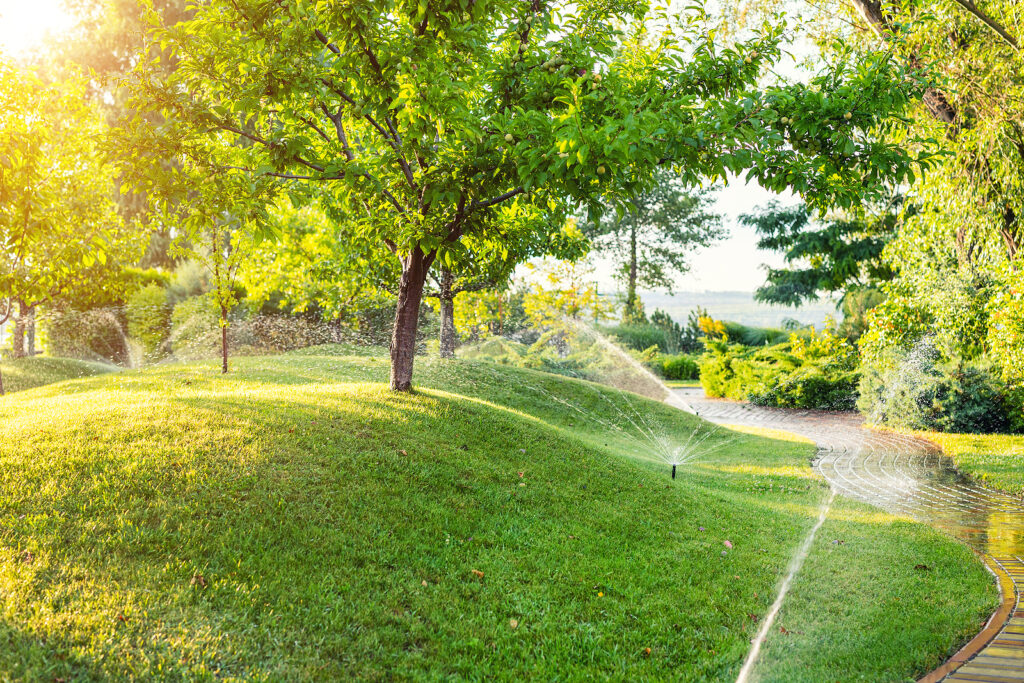
Watering on a slope
- Lawns on slopes can be difficult to water. Water on a slope can run to the base of the slope before it soaks in.
- To water a slope, use an oscillating sprinkler or soaker hose that disperses water slowly.
- Apply the greatest amount of water at the top of the slope, less at the middle, and even less at the bottom to compensate for the downward flow of water. Set a portable sprinkler at the top of the slope to allow for the downward flow of water.
- Keep the lawn on a slope aerated to allow water to trickle into the soil.
Watering tips
- Water in the early morning before sunrise (set an irrigation timer). Watering later means more evaporation.
- Avoid watering on windy days when irrigation water can blow away or evaporate quickly.
- Water deeply and less often; water that seeps into the soil is less likely to evaporate quickly.
- Water deeply to encourage deep root growth; deep root growth will make a lawn more drought-tolerant and less susceptible to pests and disease.
- Water the lawn not walkways and driveways. Use sprinklers that hit the lawn not the hardscape.
Use an irrigation system that directs water only to the lawn with little blowing or misting. Use a system that can be programmed to water at the optimum time.
Also of interest:


